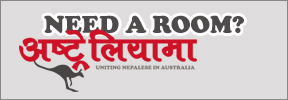COVID disruptions a boon for Balance of Payments
Aug 25, 2020 under Business/Economy 516
KATHMANDU, AUGUST 24
The months-long lockdown that began in the third quarter of the last fiscal to curb the spread of coronavirus disrupted trade and life in general. This, in turn, resulted in the country’s balance of payments in the fiscal year 2019-20 to record a surplus of Rs 282.41 billion, reveals the annual macroeconomic update of fiscal year 2019-20, which was unveiled by Nepal Rastra Bank today.
BoP, which is the difference between the money flowing into Nepal and the outflow of money to the rest of the world, was at a deficit of Rs 67.4 billion in the previous year.
According to the NRB report, the current account deficit — a measurement of a country’s trade where the value of the goods and services it imports exceeds the value of the products it exports — decreased 87.9 per cent to Rs 32.06 billion in the review year from Rs 265.36 billion in the previous year.
In the external sector, merchandise exports inched up by 0.6 per cent to Rs 97.71 billion in fiscal 2019-20 compared to an increase of 19.4 per cent in 2018- 19. Meanwhile, merchandise imports decreased by 15.6 per cent to Rs 1,196.80 billion against an increase of 13.9 per cent in the previous fiscal.
Consequently, the trade deficit narrowed down 16.8 per cent to Rs 1,099.09 billion in the review year. Such deficit had expanded 13.5 per cent in the previous year.
“The trade deficit stood at 29.2 per cent of GDP,†states the NRB report.
The previous fiscal’s annual report showed such deficit stood at 38.1 per cent in 2018-19.
The country’s gross foreign exchange reserves increased to $11.65 billion in mid-July 2020 from $9.50 billion in mid-July 2019. Based on the imports of 2019-20, the foreign exchange reserves of the banking sector are sufficient to cover the prospective merchandise imports of 14.4 months, and merchandise and services imports of 12.7 months, the NRB report states.
The impact of COVID-19 was more evident in the flow of remittance and tourism income.
Remittance inflows decreased 0.5 per cent to Rs 875.03 billion in the review year against an increase of 16.5 per cent in the previous year. Net transfer income decreased 1.3 per cent to Rs 982.22 billion in the review year, while it had increased 15 per cent in the previous year.
While the net services income remained at a surplus of Rs 1.22 billion in the review year compared to a deficit of Rs 15.23 billion a year ago, travel income decreased 19.2 per cent to Rs 60.89 billion, which was Rs 75.37 billion in the previous year.
Under the service account, travel payments decreased 40.9 per cent to Rs 53.14 billion, including Rs 25.81 billion for education in the review year. Such payments were Rs 89.91 billion and Rs 46.32 billion, respectively, in the previous year.
The NRB report states that the adverse impact of COVID-19 was witnessed particularly on government revenue mobilisation, capital spending and credit expansion from the banking sector.
Revenue collection based on banking transactions (including the amount to be transferred to provincial and local governments) stood at Rs 793.78 billion in 2019-20. Total government revenue was Rs 871.78 billion a year ago.
The share of current expenditure, capital expenditure and financing expenditure in the total budget was 64.4 per cent, 23.9 per cent and 11.7 per cent, respectively.
Domestic credit expanded 13.6 per cent in the review year compared to a growth of 21.1 per cent in the previous year.
Claims on private sector increased 12.6 per cent in the review year compared to a growth of 19.1 per cent in the previous year.
The government has already lowered the country’s economic growth projection for the fiscal 2019-20 to 2.28 per cent from its earlier target of 8.5 per cent.


